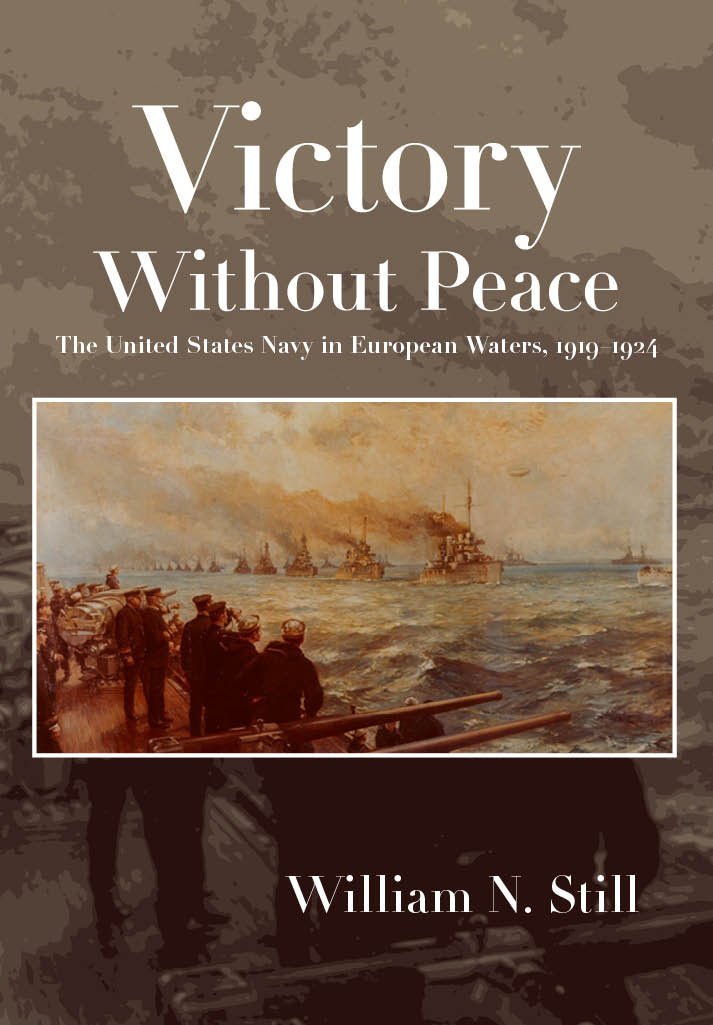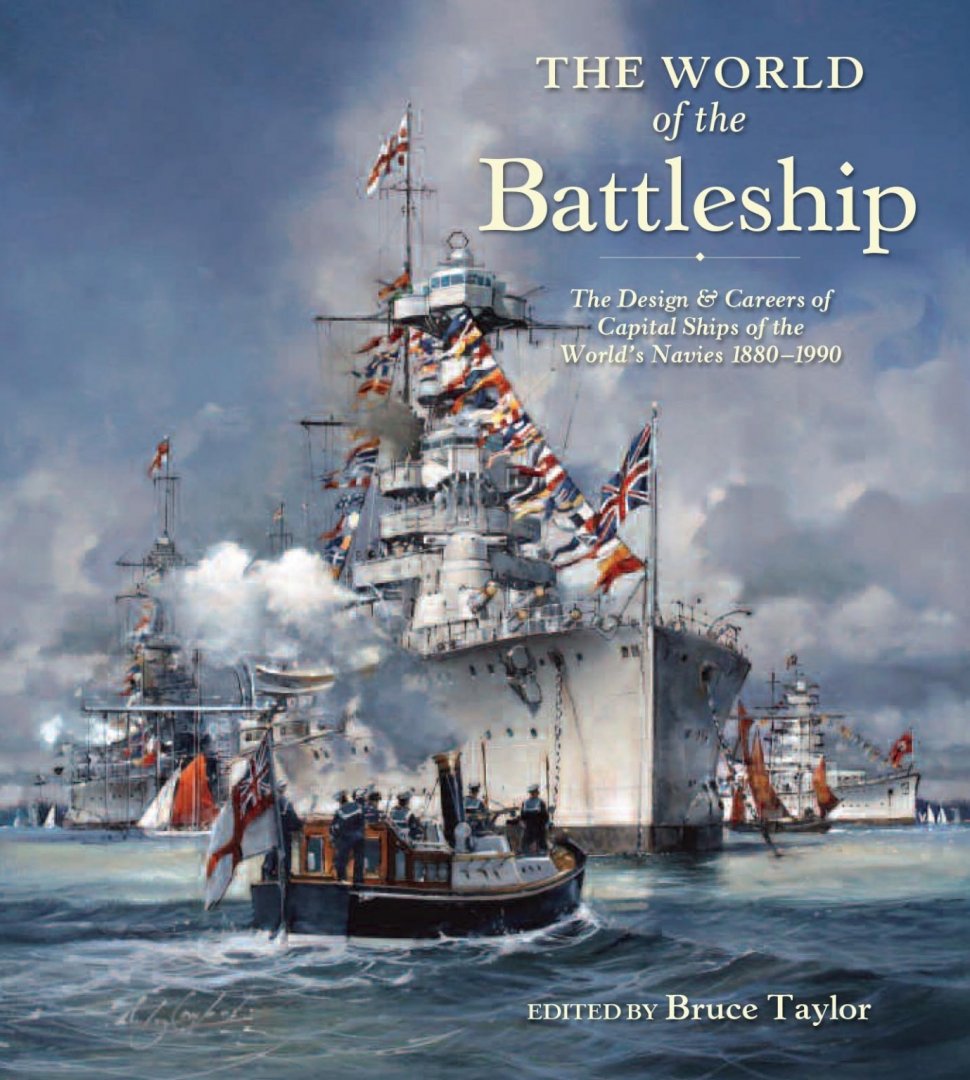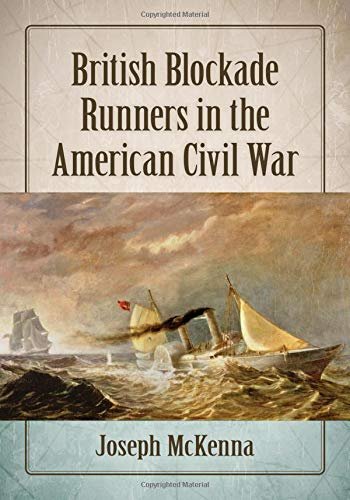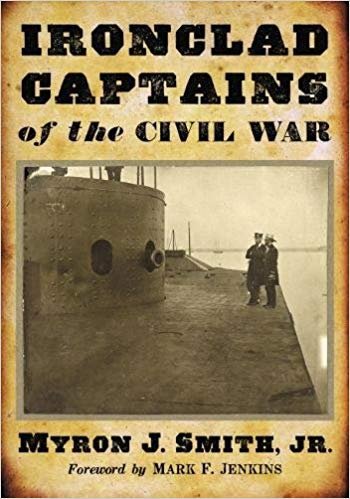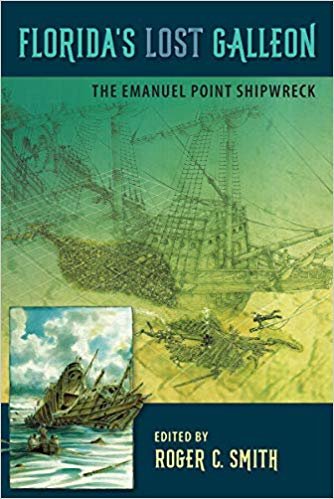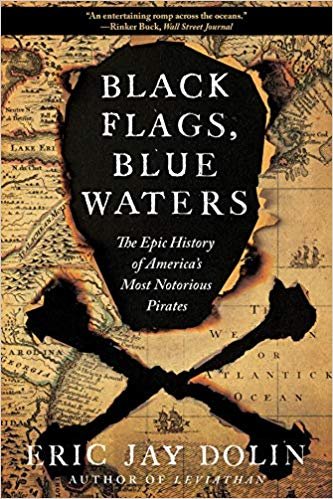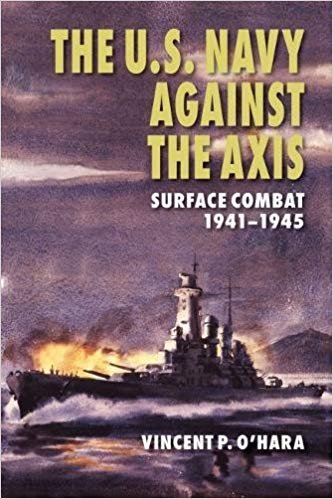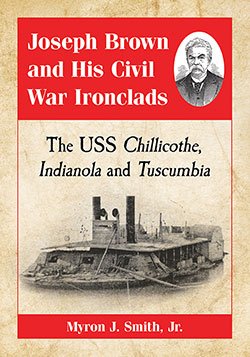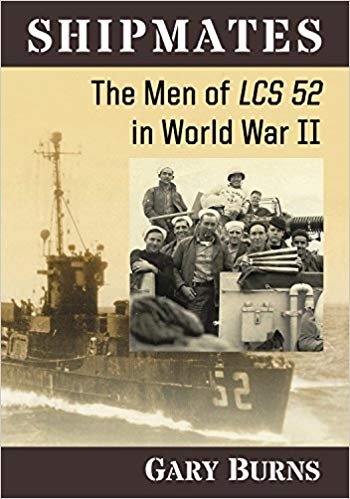-
Posts
97 -
Joined
-
Last visited
Content Type
Profiles
Forums
Gallery
Events
Everything posted by prmitch
-
The British Civil Wars at Sea, 1638-1653 By Richard J. Blakemore & Elaine Murphy Woodbridge, Sussex: The Boydell Press, 2018 6-1/2” x 9-1/2”, hardcover, xiv + 225 pages Illustrations, maps, appendices, notes, bibliography, index. $115.00 ISBN: 9781783272297 In The British Civil Wars at Sea: 1638-1653, Richard Blakemore and Elaine Murphy offer a concise, yet thoroughly researched account of the British civil wars from a naval perspective. This is a long overdue study and a largely neglected aspect of the British civil wars and naval history. A refreshing aspect of this work this that it strays from previous fashions of Anglocentrism and embraces a more holistic view of the civil wars by analyzing Royalist, Confederate, and Scottish naval activities. Discussions of Confederate naval efforts are particularly intriguing, especially the Confederation’s attempts to develop a naval administration from scratch and wage war at sea using privateers. Scottish naval efforts are only touched on briefly and are discussed more in terms of clan rivalries. The authors do make it clear, however, that after 1644 the Scots relied heavily on Parliament’s warships. When Parliament is examined the authors convincingly argue that the civil wars had a transformative effect on the navy by elevating it from a position of vulnerability in 1639 to a well-honed instrument of national security by the First Anglo Dutch War. They argue that this transformation took place when Parliament instituted state-control over the navy. This was followed by augmenting the naval administration, investing in infrastructure, and shipbuilding programs. Such activities necessitated improved revenue collection and lines of credit. These developments not only allowed Parliament to wage a more successful war at sea than its opponents, but it moved Britain more in the direction of a fiscal-military state. By changing the political nature of the navy, parliament brought forth a new crop naval officers that rose to prominence during the wars. An important theme throughout this work is the role of navies in support of ground forces. Not only did navies secure supply lines and logistically support armies, but they were instrumental in providing relief to beleaguered coastal garrisons or enforcing blockades against enemy held ports. The authors are careful, however, not to overemphasize the role of navies in the success of campaigns by pointing out their limitations. The book, however, demonstrates that naval support was key in facilitating a successful land campaign. This point is keenly felt with the navy assisting Cromwell in the conquest of Ireland and Scotland. Although the coastal regions of the British Isles provided the primary theater of operations, the authors impress upon the reader that the civil wars had a larger impact on the Atlantic World. Naval activities extended to the Azores, Canary Islands, Cape Verde Islands, Bermuda, and the American colonies. This is a thoughtful and well-written book. Blakemore and Murphy successfully navigate the confusing political and religious turmoil of the period. Furthermore, they do not dwell heavily on tactics and technology, as it is not essential to this work. Instead, they provide just enough background to enhance their analysis and their voluminous footnotes indicate where readers can find more information. Consequently, this book should find broad appeal amongst scholars and students. David Bennett North Carolina Maritime Museums This review is provided courtesy of the Nautical Research Guild.
-
Sailing School: Navigating Science and Skill, 1550-1800 By Margaret E. Schotte Baltimore: Johns Hopkins University Press, 2019 7-1/4” x 10-1/4”, hardcover, xi + 297 pages Illustrations, glossary, notes, bibliography, index. $59.95 ISBN: 9781421429533 The question of how one becomes a proficient sailor has long been a subject of debate and speculation within maritime history. At what point does a green hand become and able seaman? Which skills were considered essential in an era before state-regulated licensing? Navigators were among the earliest class of seaman to undergo regulatory exams which assessed their knowledge, skills, and preparedness to undertake the critical task of guiding ships from one safe harbor to the next. This professionalization and regulation of navigators’ skills resulted in a body of texts, manuals, workbooks, and logbooks which give insight into how these skills were taught, practiced, and retained by practitioners. As sailing routes rapidly expanded in the early modern period, so too did the skills and techniques that a navigator was required to understand. ‘Small’ coastal navigation was increasingly augmented with the need for ‘large’ transoceanic navigational techniques. Coastal pilots memorized coastlines, tides, and counted moon phases on their knuckles, and were largely trained through shipboard experience. However, increasing mathematization of the craft required that transoceanic navigators master trigonometry, memorize formulas, and adapt to new instruments by which to measure their position on the globe. In this book, Schotte adapts her dissertation into a detailed, transnational study of how navigators were trained, evaluated, and the texts and tools they employed along the way. Schotte mines archives throughout Europe, particularly Spain, The Netherlands, France, and England. Using textual and content analysis approach, she outlines which techniques and skills were most favored by different nations throughout time. What emerges is a strikingly similar trajectory in the techniques used by navigators throughout Europe, even though the timeline of adoption and the emphasis of topics differed from nation to nation. This study reveals how the proliferation of print and literacy improved the training of navigators until it was an essential skill. Despite the growth in classroom learning, the need for practical, shipboard experience was crucial. Nations often struggled to find the right balance of book learning and shipboard experience, and this ‘pendulum’ often swung back and forth throughout the period and according to the priorities of each locale. The work is thoroughly researched, analyzed, and includes a multitude of descriptive end notes and citations. Schotte frequently includes passages of narrative description, illustrations, engravings, diagrams, and images from manuscripts which help break up and bring clarity to heavily technical sections. Admittedly, the nuance of Euclidian geometry, trigonometry, and logarithms as applied to navigation may be a bit lost on readers with a soft grounding in mathematics. However, Schotte does an admirable job explaining the principles of such technical skills, and how navigators applied that information to solve navigational problems both in the classroom and on the decks of their ships. There is surprisingly limited discussion of the chronometer its effect on navigational practice. However, this omission is understandable when recognizing that the technology came into use towards the end of the period, and that the topic has been covered at length in other volumes. The final chapter narrates how one English navigator, Edward Riou, was able to steer a foundering vessel to safety despite challenging weather conditions and a missing rudder. This chapter beautifully encapsulates how proficient navigators were required to balance technical and practical skills and be well versed in a variety of navigational techniques, both old and new, in order to solve problems at sea. Overall, Sailing School is and extremely informative look into the practice and transmission of navigational knowledge in Europe during the scientific revolution, and how text helped to codify and communicate that information to new practitioners. Kendra Lawrence East Carolina University This review is provided courtesy of the Nautical Research Guild.
-
Confederate Ironclads at War By R. Thomas Campbell Jefferson, North Carolina: McFarland, 2019 7” x 10”, softcover, vii + 268 pages Illustrations, appendix, notes, bibliography, index. $49.95 ISBN: 9781476676401 The name R. Thomas Campbell is well-known to anyone who has studied the history of the Confederate Navy over the past two decades. Campbell has published no fewer than twenty books in the last quarter century, either as author or editor, all on a variety of Confederate naval topics. In this reviewer’s opinion, his best work was Storm Over Carolina, published in 2005. Campbell’s work has also been published in numerous periodicals. His latest release, Confederate Ironclads at War, is a useful volume for anyone interested in the Confederate Navy. Through the histories of individual ships, Campbell tells the story of the Confederates’ quest to procure and produce ironclads throughout the war. He argues that although the Confederate Navy exhibited “unsurpassed resourcefulness, courage, and ingenuity,” in the end it was “too little too late.” The Introduction nicely summarizes the challenges faced by the Confederate Navy and the logic behind its ironclad construction program. This is followed by fourteen chapters on individual ironclads and an appendix listing the officers and crew members for six of those ships. A glance at the chapter notes and bibliography reveals a vast array of both primary and secondary sources. Campbell tends to include large block quotes from primary sources in the narrative, though not as frequently as in his earlier works. Otherwise, his writing is very clear, concise, and engaging in most instances, and the book is well-illustrated throughout, though a few images appear more than once. Aside from a few typos, the book is well-edited and handsomely produced. Unfortunately, as with all this publisher’s books, the price is somewhat steep, in this reviewer’s opinion. Campbell selected the best-known of the Confederate ironclads for inclusion in this work, but not all receive equal treatment. Chapters on CSS Virginia, CSS Albemarle, and CSS Arkansas are the longest in the book, likely because they possess the most compelling stories. Curiously, CSS Jackson receives a scant four pages, three of which are images, and the single page of text is reprinted by permission from another source and author. This leads one to wonder if this ship was included only because its remains are now housed at the National Civil War Naval Museum. The remaining ten chapters are all roughly equal in length. Having produced so much material on the Confederate Navy throughout his career, one must question whether Campbell has anything new to say about the subject and, unfortunately, the answer appears to be “no.” He admits in the introduction that two complete chapters, “The Blockade is Broken” and “The Last Ironclad, the CSS Stonewall” are reprinted from his 1997 book Southern Fire: Exploits of the Confederate States Navy. In addition, much of the information found in the remaining chapters is almost certainly reworked from previous books and articles as well. However, this does not necessarily detract from the value of this book. Many of Campbell’s older works are out of print and the publishers of those books no longer exist. Therefore, Confederate Ironclads at War will appeal to a new generation of readers with an interest in the Confederate Navy. Andrew Duppstadt North Carolina Division of State Historic Sites This review is provided courtesy of the Nautical Research Guild.
-
Captain Kidd’s Lost Ship: The Wreck of the Quedagh Merchant By Frederick H. Hanselmann Gainesville: University Press of Florida, 2019 6-1/4” x 9-1/4”, hardcover, xxii + 198 pages Illustrations, drawings, tables, maps, bibliography, index. $85.00 ISBN: 9780813056227 The allure of pirates has spanned generations, inspiring numerous fictional works and a myriad of historical and archaeological research to understand the lives of these nationless sailors. In recent decades, archaeology has begun to embrace the study of pirates and methodically explore their resources, including vessels, as significant cultural resources. Frederick Hanselmann, the director of the Underwater Archaeology and Exploration Program at the University of Miami, has spent his career working throughout the Spanish Main and analyzing the political and economic interactions between the colonial empires throughout the area. Through his work, Captain Kidd’s Lost Ship: The Wreck of the Quedagh Merchant, he brings the varying empires and their interactions together around Captain William Kidd and the age of piracy. Hanselmann’s work not only provides significant evidence that the wreck off Catalina Island in the Dominican Republic is in fact Quedagh Merchant; in doing so, he also offers a framework for contextualizing a shipwreck within a larger historical narrative and creating a viable management and interpretation plan for a shipwreck site. In characterizing the wreck as Quedagh Merchant, Hanselmann first addresses the theoretical frameworks used to connect the broader historical trends with the individual actions of those involved with the physical remains of the site in the Dominican Republic. He focuses his framework around multiscalar world-systems and individual agency as symbolized in the shipwreck site and its global story. Delving directly into the global and individual histories at play, Hanselmann contextualizes the connections and power roles that developed between the British, their Indian counterparts, and the American colonies in the larger world that Indian Ocean piracy and Captain William Kidd navigated through. The in-depth historical context provided the basis for laying the groundwork for exploring the shipwreck. Hanselmann moves his framework, and argument, forward by next addressing the site itself. He lays out the archaeological methodology used to investigate the site before providing the hypothesis developed concerning the identity of the wreck. Observations noted about the form and function of the wreck outlined in the hypothesis were compared to the historical research. Through this comparison, he provided compelling evidence the wreck is indeed the Indian vessel, Quedagh Merchant, captured by Captain William Kidd. To complete his framework, Hanselmann covers the structures now in place to not only protect the site, but to also interpret the site and use it as a part of the tourism of the Dominican Republic. By the end, Hanselmann successfully argues the vessel is Quedagh Merchant and shows a useful framework for theoretical analyzing a shipwreck site and providing meaningful management and interpretation. While the work is filled with many direct quotes that make reading a little dense, Hanselmann is able to use these quotes effectively to aid in laying his theoretical approach, historical research, and management overview. These features, and quotes accompanied by well-placed images and tables, allow him to present a strong argument for the identity of the shipwreck site off Catalina Island, its place in the global piratical and colonial history of the late seventeenth century, and feasible management and interpretation strategies. Captain Kidd’s Lost Ship is not only a compelling work for any person interested in piracy, but also a fundamental example of using a clear theoretical framework for analyzing and interpreting a shipwreck site. Allyson Ropp St. Augustine Lighthouse & Maritime Museum This review is provided courtesy of the Nautical Research Guild.
-
Before the Battlecruiser: The Big Cruiser in the World’s Navies, 1865-1910 By Aidan Dodson Barnsley: Seaforth Publishing, 2018 Annapolis: Naval Institute Press, 2018 9” x 11-1/4”, hardcover, 304 pages Photographs, diagrams, maps, appendices, notes, bibliography, index. $57.95 ISBN: 9781473892163 The historiography of warship technology in the second half of the nineteenth century is dominated by analysis and discussion of developments in battleship design, essentially, the competition between protection and artillery that culminated in the emergence, in the very early 1900s, of the dreadnought type. Battleships also became the defining metric for contemporary determination of relative naval power. Aidan Dodson’s Before the Battlecruiser, however, illuminates the development of “big cruisers” during the same period. In general, these vessels, compared with their battleship contemporaries, were faster, not quite as heavily armed, and less well protected. They were constructed to serve as major warships in more distant waters, as commerce raiders, or as fast scouts for the battlefleet. Just as battleship development culminated in the dreadnought type, so these large cruisers evolved into the battlecruisers of the early 1900s. But this story has received very little previous attention. Much more has been written about torpedo boats and destroyers or submarines than on these large cruisers. This lack of attention is quite remarkable because the technological developments embodied in these cruisers made them major factors in and drivers of contemporary naval doctrines. Their development and use as powerful, long-ranged raiders underpinned a major thread of naval strategy built around campaigns against commerce rather than decisive encounters between battlefleets. Their construction and deployment as capital ships outside European waters enabled and then consolidated much of Europe’s colonial expansion in the later nineteenth century. Their ultimate emergence and deployment as heavily armed fast elements for battlefleets drove efforts to develop true fast battleships. The most remarkable detail that emerges from Before the Battlecruiser is sheer scope of the big cruisers’ operational contributions during this period. Big cruisers, either in their own right or as major components of battlefleets, engaged in almost every significant naval combat, and a host of lesser skirmishes, during the later nineteenth century. Cumulatively, these ships saw appreciably more action than their battleship contemporaries. Dodson’s exposition of this story is presented in two sections. A very thorough analysis and description of the origins, development, and operational employment of these bog cruisers fills the first half of the book. This text is supported by a quite excellent selection of photographs, all clearly printed and many rarely published before. The second half is a catalog of the more than two hundred ships of this type that entered naval service. The catalog presents the usual vital statistics one expects, supported by small sketch broadside representations to scale of the ships. A considerable number of these sketches either come from contemporary editions of Brassey’s Naval Annual or Jane’s Fighting Ships or are rendered in the same style. Before the Battlecruiser is a major contribution to the literature of naval development in the later nineteenth century. It is a beautifully presented, thoroughly analyzed, and lucidly written presentation of a long-neglected topic. It needs to find a place in the library of any serious student of warship history of the period. Christopher Conlan Philadelphia, Pennsylvania This review is provided courtesy of the Nautical Research Guild.
-
The Colour Blue in Historic Shipbuilding from Antiquity to Modern Times By Joachim Müllerschön Norderstedt: BoD -Books on Demand, 2019 7-3/4” x 11”, hardcover, 200 pages Illustrations, notes, references. €76.80 ISBN: 9783749419883 Every once in a while a new book is published that defies simple classification but, simultaneously, turns out to contain so much useful and intriguing information that it cannot be ignored. The Colour Blue in Historic Shipbuilding is just such a work. Its title would classify it instantaneously as esoterica, of interest only to a minute audience of obsessive researchers, but the reality of this book is very different. One central component of Müllerschön’s work is a breathtakingly thorough chronological analysis of the pigments and binders used through history to manufacture blue paints. This alone makes The Colour Blue in Historic Shipbuilding essential reading for professionals working in most aspects of historic restoration, renovation, or reconstruction, well beyond the confines of maritime contexts. Within the narrower field of ship models, reference to this analysis will be essential for restorers of historic models and those wishing to create accurate new models. His chronology provides all the data necessary to ensure that the specific pigments and binders are appropriate for the period of the model. The second main component illustrates the use of this great variety of blue paints. Müllerschön draws on museum and gallery collections for images of models and contemporary artwork that demonstrate the range of usages through time. A third possibly quite fortuitous element is the history of ships and boats that Müllerschön’s illustrations create. It is quite possible to read The Colour Blue in Historic Shipbuilding as an outline history of shipbuilding from ancient Egypt to present-day recreations of historic vessels. A work like this ultimately stands or falls on the quality of its presentation. Print-on-demand works generally do not have a high reputation but The Colour Blue in Historic Shipbuilding defies this. The quality of image reproduction and typeface presentation is excellent and adds greatly to the work’s utility. The Colour Blue in Historic Shipbuilding confounds expectations. Its topic indeed is esoteric but the book’s content and presentation give it a wide-ranging value and importance far beyond the limitations of its title Paul E. Fontenoy Albuquerque, New Mexico This review is provided courtesy of the Nautical Research Guild.
-
“Our Little Monitor” The Greatest Invention of the Civil War By Anna Gibson Holloway & Jonathan W. White Kent: The Kent State University Press, 2018 7-1/4” x 10-1/2”, hardcover, xix +283 pages Illustrations, tables, appendix, notes, bibliography, index. $34.95 ISBN: 9781606353141 Few Civil War ships have been as written about as USS Monitor. Many books and articles about the first-of-its-kind warship and the Battle of Hampton Roads, which served as its proving ground have been published. This new work by Anna Gibson Holloway and Jonathan W. White is positioned to become the definitive work about Monitor. This should come as no surprise, as there may be no one in the field as knowledgeable about this ship as Dr. Holloway. As curator of the USS Monitor Center at the Mariner’s Museum in Newport News, Virginia, she became immersed in the history, archaeology, and lore of one of America’s most famous warships, first turning that knowledge into a doctoral dissertation, and then this book, which deserves a place on the shelf of everyone with an interest in the American Civil War. Here, the story of Monitor is told with great care and detail, without becoming mired in minutiae. The book is divided into two parts. The first part, “The Monitor in History and Memory” details the history of Monitor from conception to demise to ultimate discovery and recovery. The opening chapter begins the story by discussing the standing of both the Union and Confederate navies at the outbreak of war and the conversion of USS Merrimack to CSS Virginia by the Confederates. From this starting point, the authors examine the politics of the Union Navy as its officers and other government officials debated building armored warships, until finally contracts were let for building Monitor and others. Chapters 3 and 4 cover the building of Monitor and the Battle of Hampton Roads. Chapters 5, 6, and 7 are quite possibly the most interesting in the book. Chapter 5 looks at Monitor in popular culture, beginning immediately following the battle. Songs and poems were written about the ship, many consumer items were produced using images of the ship and the battle, and national interest soared. Images of the ship continued to be used in advertising well into the twentieth century. Chapter 6 explores the thoughts of people across the spectrum immediately following the battle. While many in the country were ecstatic about this new era of naval history, the officers and sailors often viewed things differently. Though widely touted as heroes, many of the men on board did not agree. Some felt as though they had not even been in a battle, one officer stating, “we haven’t done much fighting, merely drilling the men at the guns a little.” Another wrote to his wife, “there isn’t even danger enough to give us any glory.” In 1866, Herman Melville wrote in a poem about the ship, “War shall yet be, but warriors/Are now but operatives.” These sentiments ring true today, as modern warfare has brought us to the point where drones can do much of the fighting and killing. Chapter 7 tells the story of the last two months of Monitor’s life, ending in the ship’s loss off Cape Hatteras, the details of which are still chilling today. The final chapter of the first part of the book conveys a very detailed account of the search for and discovery of the wreck, as well as the recovery of the engines and turret. The authors also discuss the attempt to identify the remains of two sailors found in the turret, and their eventual interment at Arlington National Cemetery, which provides a fitting ending to the story. The second part of the book is a collection of original documents related to the Monitor, each with added context. Some are letters written about the ship or life on board; others are articles from a variety of newspapers nationwide. There are stunning, full color photographs of designs for other types of ironclads, improvements to Monitor, and other various and sundry inventions that were sent to President Lincoln. This portion of the book is not only interesting to read, but also a good reference. The Kent State University Press did a marvelous job producing this book. The pages are glossy like a textbook, but of heavier stock. The full color illustrations throughout bring the book to life. Aside from the Mariner’s Museum collections, material from the Library of Congress, National Archives, and NOAA are used extensively. The quality of this volume is impressive. The research is excellent, the bibliography is solid, and the writing is fluid. Highly recommended! Andrew Duppstadt North Carolina Division of State Historic Sites This review is provided courtesy of the Nautical Research Guild.
-
U.S. Navy Auxiliary Vessels: A History and Directory from World War I to Today By Ken W. Sayers Jefferson, North Carolina: McFarland, 2019 7” x 10”, softcover, vii + 353 pages Photographs, glossary, notes, bibliography, index. $45.00 ISBN: 9781476672564 Military men often say. “Amateurs talk tactics. Professionals talk logistics.” What is true for the army and air force goes double for the navy. You cannot fight if you cannot get there. Since steam replaced sail you cannot get there unless you have fuel. Even if you have fuel, you cannot win without the food, supplies, and ammunition to fight. U. S. Navy Auxiliary Vessels: A History and Directory from World War I to the Present, by Ken W. Sayers, brings much needed attention to one of the most important, yet often overlooked part of the United States Navy: its fleet logistics chain. The book provides a ready reference to the ships that have made up this force for over 100 years. Sayers divides his book into three parts. Part I covers Combat Logistics and Fleet Support Ships. Combat logistics ships have the capability of providing underway replenishment to fleet units. Fleet support ships operate on open ocean to support combatant forces. Part II covers Support Ships, vessels designed to provide general support to combatant forces or shore bases. Part III is a directory of inactive United States Navy auxiliary ships. Within each section, ships are sorted by type, alphabetically by United States Navy code (AKA, AO, etc.) A brief explanation of the purpose of that type of auxiliary is provided, followed by a history of the class: when it was first used, and the subsequent use and eventual abandonment of the type (if applicable). This is followed by a roster of all ships of that type used by the Navy, selected specifications of the important classes of these ships, and histories of the significant ships in the type discussed. Service dates of the ships not given individual histories are listed in the notes section at the end of each section. One interesting result of this sorting is the most modern types of auxiliaries tend to be listed first, as today’s navy leans more heavily on combat logistics and fleet support ships than on support ships not designed for open ocean work. Another interesting observation is the increasing trend towards multi-mission combat logistics ships in the modern navy. The fleet tanker and underway replenishment ship of World War II have merged into a single ship capable of delivering “beans, bullets, and black oil.” While not a comprehensive history of every auxiliary (which would likely require a library needing a ship to carry) the selected history approach used by Sayers allows U. S. Navy Auxiliary Vessels to provide a comprehensive overview of 103 years’ worth of United States Navy auxiliary ships. The histories are brief, but informative, and the text is not dry. It is engaging and readable. He even lists Constitution in the Support Ships section, making a credible defense of that placement. In all, U. S. Navy Auxiliary Vessels is a valuable addition to the library of anyone interested in the modern navy, from World War I on, especially readers seeking information on post-World War II auxiliary ships. It delivers detailed information in a concentrated package. Mark Lardas League City, Texas This review is provided courtesy of the Nautical Research Guild.
-
I need to thin out my book collection and am offering the following for sale. I prefer PayPal for payment but will accept check or money order. I've tried to price them fairly but I am open to offers. Please PM me with your requests. Prices DO NOT include shipping. Thank you, Paul --- Frolich, Bernard The Art of Ship Modeling: Sailing Navy 1680-1820, Piermont/Nice, Pier Books/Dupont Communications/A.N.C.R.E., 2002, [excellent condition w/ dust jacket], $65 Lavery, Brian The Arming and Fitting of English Ships of War 1600-1815, Annapolis, Naval Institute Press, 1987, ISBN 0-87021-009-2 [excellent condition w/dust jacket], $50 Lees, James The Masting and Rigging of English Ships of War (revised edition), London, Conway, 1984, ISBN 0-87021-948-0 [very good condition], $32
-
Victory Without Peace: The United States Navy in European Waters, 1919-1924 By William N. Still, Jr. Annapolis: Naval Institute Press, 2018 7-1/2” x 10-1/2”, hardcover, xi + 368 pages Photographs, notes, bibliography, index. $68.00 ISBN: 9781682470145 Victory Without Peace is the final volume of William N. Still’s groundbreaking study of the United States Navy’s operations in European waters. By 1919, when this book begins, the “war to end all wars” was over, the United States and its allies were the victors, the country was eagerly awaiting the return of its troops, and there were expectations of an economic “peace dividend” not least from the drawing down of the nation’s armed services. For the Navy, hopes for a rapid return to the routines of peacetime operations were quickly dashed. Allied leaders were determined to prevent the re-emergence of strong states in what had been the Central Powers (Imperial Germany, Austria Hungary, and the Ottoman Empire). During the conflict and in its aftermath in the peace negotiations, prominent politicians, most notably Woodrow Wilson, deliberately (and, most probably, quite cynically) played the card of national self-determination to break up the states of the old Central Powers, encouraging the creation of a string of nation-states from the separate nationalities of these empires. What none of these politicians envisaged were the full ramifications of this ploy. They quickly learned that these various nationalities were not willing to be coerced into forming tidy nation-states that would fulfill the expectations of the Allied powers by containing the rumps of the defeated empires. Instead, national self-determination became the rallying cry for a plethora of ethnic, racial, or cultural groups seeking independence. The consequences were instability, regional conflicts, ethnic cleansings, and genocides. Allied leaders needed to bring this situation under control if their grand plan for European peace were to come to fruition. Military operations were necessary. Naval forces were particularly attractive for these missions because it was much easier to disengage them from situations than to extract ground troops. Thus the United States Navy found itself thrust into “operations short of war” in the eastern Mediterranean, the Aegean, the Adriatic, and even in the Baltic. The numbers were quite small and most vessels were light craft, such as destroyers, but operations were relentless and potentially dangerous. The Navy also took on two other major missions during the period immediately after the war. Much of the organization and administration for shipping home millions of troops fell to it. The massive mining campaigns undertaken mainly in the North Sea, the English Channel, and the mouth of the Adriatic to obstruct the passage of U-boats during wartime now had to be cleared to make these waters safe for merchant shipping. Almost all of this hazardous task was undertaken by the United States and Royal navies, both of which suffered quite noticeable casualties for peacetime in the process. Still’s study of this often-overlooked period of United States naval operations is best described as magisterial. It is a comprehensive, deeply researched, brilliantly expounded, and lucidly presented story whose resonance with the Navy’s missions in the early twenty-first century is unmistakable. Victory Without Peace is a fitting conclusion to Still’s trilogy. Edward Hamilton University of Chicago
-
Oceans Ventured: Winning the Cold War at SeaBy John Lehman New York: W.W. Norton & Company, 2018 6-1/2” x 9-1/2”, hardcover, xxix + 330 pages Photographs, notes, bibliography, index. $27.95 ISBN: 97803932542549 On November 9, 1989 the Berlin Wall came down, symbolizing the collapse of the Soviet Union and its defeat in the Cold War. Economic exhaustion precipitated by its strenuous efforts to match and surpass the military prowess of the United States abruptly brought the Soviet Union to its knees, ending a forty-year conflict. John Lehman’s Oceans Ventured tells the story of one of the most important factors in this victory. The United States Navy expanded and updated its forces, developed cutting edge technological solutions, and demonstrated a consistent ability to project overwhelming power forward into waters the Soviet Union regarded as sacrosanct. In response, the Soviet Navy was compelled to demand an ever-increasing share of the nation’s budget to build up its own strength to repel the intrusions. When combined with parallel accretions to its already huge land and missile forces, these expenditures overwhelmed the Soviet Union’s economic resources and led to its collapse. Dr. Lehman’s narrative often reads like a thriller. Because of his background as a frontline naval aviator, he is able to project the tension and excitement of these operations into the waters of the Soviet bastion. Simultaneously, his academic, administrative, and policy background enables him to incorporate the critical political and doctrinal components that underlay the development and execution of the United States Navy’s forward power projection mission. In addition, his personal participation as Secretary of the Navy in the process lends particular strength and authority to the narrative. This latter, however, is also a limitation upon Ocean Venture’s ready acceptance as a definitive source. Because of Lehman’s direct involvement in the story, it is both intensely personal and highly political. Lehman can tell an authoritative story but, because much documentation pertinent to the narrative remains classified, he cannot use it to underwrite his thesis and no outsider can access the evidence to validate or discredit him. This cuts to the heart of his proposition that there was a radical change in naval doctrine with the Reagan administration. It may well be true, but the inaccessibility of much of the evidence to support it makes it an assertion rather than a fact. Oceans Ventured vividly and powerfully tells the story of the Navy’s indispensable role in winning the Cold War. It has serious limitations, in part from secrecy restrictions, but it also is a superb starting point for further research and discussion on this very important topic. Patrick Clark Northeastern University
-
The World of the Battleship: The Design & Careers of Capital Ships of the World’s Navies 1880-1990 Edited by Bruce Taylor Barnsley: Seaforth Publishing, 2018 Annapolis: Naval Institute Press, 2018 9-3/4” x 10-1/2”, hardcover, 440 pages Photographs, tables, notes, bibliographies, index. $76.95 ISBN: 9781848321786 From the outset The World of the Battleship disconcerts, not least because the subtitle on the dustjacket—The Design & Careers of Capital Ships of the World’s Navies 1880-1990—is markedly different from that in the book itself—The Lives and Careers of Twenty-One Capital Ships from the World’s Navies, 1880-1990. The latter, in fact, far more accurately describes this book’s content than the former. Almost as disconcerting is the realization that it is almost easier to determine what this book is not than to review what it accomplishes. It is not a technical history of capital ships even though it contains a considerable amount of technical data. It is not an operational history despite each of its essays including appreciable coverage of operations. It does not focus on diplomatic, strategic, or procurement policies but devotes quite some space to these concerns. If The World of the Battleship is none of these, what then is it? The shorthand answer is that it is a social history of capital ships that presents the stories of the operators within the context of the technologies, military operations, and national diplomatic, strategic, and procurement objectives pertinent to each of the vessels described in this collection of essays. Editor Bruce Taylor’s accomplishment is that he makes what could have been an incoherent collection of disparate stories into a compelling unified presentation of the maritime world of the capital ship. This is even more remarkable when one realizes that the essays present the perspectives of twenty-one different nations and that less than a quarter of the contributors are native English speakers. Taylor’s introductory essay immediately sets the tone, bringing to the forefront both the international dimension of the capital ship’s technologies and the societal implications (financial, industrial, diplomatic, operational, and personal) of these vessels. The successive essays, even though all have very different perspective, combine to reinforce this presentation of the social history of battleships. One could argue with some of Taylor’s choices. Is Scharnhorst the best platform to tell the Kriegsmarine’s story and one wonders whether Rivadavia might be a more effective representative for Argentina, especially as its rivals Brazil and Chile have dreadnoughts as their storytellers. He also admits the omission of some potential platforms; it is unfortunate that the rare opportunity to tell a part of the Royal Siamese or Royal Portuguese navies’ stories was missed. Nevertheless, The World of the Battleship is a remarkable, innovative, and compelling work whose sum brilliantly succeeds in being greater than its individual parts. Christopher Conlan Philadelphia, Pennsylvania
-
British Blockade Runners in the American Civil War By Joseph McKenna Jefferson, North Carolina: McFarland, 2019 7” x 10”, softcover, vii + 209 pages Illustrations, notes, bibliography, index. $49.95 ISBN: 9781476676791 As there are hundreds of books on American Civil War maritime history and the blockade of the South, one has to question what makes McKenna's book stand out among his colleagues’ writings? The author states in his introduction that he hopes to rectify "little mistakes" made in American writings that have been perpetuated due to the lack of British records. Certainly, McKenna has gone to great lengths to provide new information in his endnotes and to document as much source material as possible. To a degree, his notes are more substantial than the body of his text. For example, and perhaps for the sake of brevity, McKenna tries to oversimplify Lincoln's policies in 1861: "One of the main planks of Lincoln's policy had been the abolition of slavery. For the present, the South needed its slaves." However, according to Doris Kearns Goodwin, in Team of Rivals, in his inaugural address President "Lincoln moved to calm the anxieties of the Southern people…he had ‘no purpose, directly or indirectly, to interfere with the institution of slavery in the States where it exists. I believe I have no lawful right to do so.'" While this was disconcerting to many in his abolitionist base, it was not until later that Lincoln publicly provided his policy on ending slavery. While the author's endnotes are quite good, his documentation for the volume of data in his introduction and subsequent chapters go unlisted. While most American Civil War historians understand that the blockade covered over "3,500 miles (5,600km) of Confederate Coastline, with 189 harbors, rivers and inlets," there is no endnote to allow the reader the ability to seek out this data and know if it was pulled from Robert Browning, William N. Still, Jr., or another historian that has written on the blockade. One must also understand that while the Official Records of the Union and Confederate Navies in the War of the Rebellion is a great resource, it too, must be put into the same context as newspapers and other letters; it cannot stand alone. Throughout his book, McKenna makes use of ship manifests and information on their captains and crews to develop an interesting and broader picture of this international venture. The list of vessels in alphabetical order showing builders and runs gives researchers an excellent primer. While he did use reliable sources from archives to assist him, he also quotes the writings of James Sprunt and lectures from the Ladies Memorial Association (now the United Daughters of the Confederacy) which are deeply immersed in Lost Cause rhetoric. While many scholars today shy away from the post-war hyperbole, McKenna weaves it into his encyclopedic entries to add a dash of excitement. McKenna does present new information in a format that is consumable for the average reader. He uses newspapers, archival information, and personal accounts to introduce us to those in Great Britain who built vessels, ran the blockade, and aided the South in the Confederate war effort. For those who have read Clyde Built: Blockade Runners, Cruisers and Armoured Rams of the American Civil War and Masters of the Shoals, British Blockade Runners in the American Civil War will be a good addition to their collection. Lori Sanderlin North Carolina Maritime Museum at Southport
-
Ironclad Captains of the Civil War By Myron J. Smith, Jr. Jefferson, North Carolina: McFarland & Company, 2018 7” x 10”, softcover, 262 pages Illustrations, maps, bibliography, index. $75.00 ISBN: 9781476666365 Myron J. Smith, Jr., emeritus library director and professor at Tusculum University in Tennessee is best known for the wealth of scholarship he has contributed on the Civil War navies in the western theater. In this, his latest volume, he has produced an excellent reference source for anyone interested in the history of the navies and ironclads of the period. In the Introduction, he acknowledges that his forty-five years of research and eight previous books, especiallyCivil War Biographies from the Western Waters(MacFarland, 2015), established the basis for this most useful encyclopedia. In the foreword, Mark F. Jenkins establishes the importance of this volume, stating “in many ways, these men were at least as interesting as the strange new ships they served aboard,” and “As fascinating as the ironclads themselves undoubtedly are, the men deserve at least as much attention.” Jenkins and Smith both speak to the appeal the ironclads have for both serious scholars and amateur enthusiasts of the war, mainly due to their uniqueness. Over the broad span of naval history, they are a quickly fleeting moment in the evolution of ship design. Bringing into focus the human element helps to put these ships into a broader context. The biographies contained in the volume are typical of this type of work. Each entry includes name, dates of birth and death, service (USN or CSN), the name(s) of the ironclad(s) commanded, and as full a biography as possible. In a useful appendix, Register of Ironclad Captains, the author lists each ship in alphabetical order (Confederate followed by Union), and a list of the commanders for each. The volume is well-illustrated throughout; if there is no image of the person, an image of the ship they commanded is included. Concluding each biography is a list of sources used. One need only look at the extensive bibliography to see how well-researched this book is, and the author gives credit to many institutions in his acknowledgements. While this volume will prove useful to any student of the Civil War navies, the price is likely to be prohibitive. The paperback version is listed at a price of $75, and even the Kindle edition is over $30. Given the cost, many readers will have to look for this volume in their nearest library. Andrew Duppstadt North Carolina Division of State Historic Sites
-
Florida’s Lost Galleon: The Emanuel Point Shipwreck Edited by Roger C. Smith Gainesville: University Press of Florida, 2018 6-1/4” x 9-1/4”, hardcover, xvii + 299 pages Illustrations, diagrams, appendix, references, index. $34.95 ISBN: 9780813056760 The discovery of the Emanuel Point shipwreck in 1992, subsequent field excavation campaigns and field school work, associated historical research, ongoing conservation of recovered artifacts, and public outreach programming all are the substance of this relatively brief and highly readable work. The wreck itself, part of the expedition led by Tristán de Luna to create a settlement in Florida as the starting point for an overland bypass around the treacherous Bahamas Channel, is the earliest to be found to date in the state. The efforts associated with the site also laid the foundations for vibrant subsequent nautical archaeological work undertaken by the Florida Bureau of Archaeological Research, the University of West Florida, and public projects through the Florida Public Archaeology Network. This compilation, edited by Roger C. Smith, of submissions from practitioners intimately involved in the project is very different from many other archaeological reports. The style is personal without glossing over the necessary technicalities, so that the reader is drawn into the project as it unfolds. The various authors manage to convey a palpable sense of the excitement of working on every aspect of this site without in any way diminishing the academic rigor of the presentation. Despite containing pieces from seven contributors, including several with more than one author, there are virtually no jarring transitions, a tribute to the skill of the editor. The Emanuel Point shipwreck is a very important site, not least because the environmental conditions in Pensacola Bay over the centuries allowed for the survival of an appreciable body of hull structure and a substantial assemblage of artifacts. The hull remains suffice to evidence that this was one of the larger ships of Luna’s fleet, indicate that it was a veteran of the Atlantic passage from Spain to the New World, and demonstrate the drama of the wrecking itself. Archaeologists have recovered more than five thousand objects from the site and the process of conserving and analyzing this assemblage is ongoing. The historical record shows that survivors of the hurricane that struck the fleet salvaged large amounts of materials and cargo for their survival. What was left behind suffices to tell a compelling story of how the mariners, soldiers, and colonists lived aboard, the necessities they brought with them, and even indications of cargoes carried on previous voyages. Equally education al is the discussion of the conservation processes that enabled the survival and analysis of these objects. One of the most exciting aspects of this book is its exposition of the programs created to involve the general public, avocational archaeologists, and students in local schools in participating and learning from the various aspects of the work on the discovery. Florida’s Lost Galleon is a stunning addition to the literature of nautical archaeology. Its combination of accessibility and rigor makes it a model for generating accessible archaeological reportage. Kelly Hanson University of Southern California
-
Black Flags, Blue Waters: The Epic History of America’s Most Notorious Pirates By Eric Jay Dolin New York: Liveright Publishing Corporation, 2018 6-1/2” x 9-1/2”, hardcover, xxix + 379 pages Illustrations, maps, notes, bibliography, index. $29.95 ISBN: 9781631492105 As Eric Jay Dolin notes, both in his introduction and in his acknowledgements, there is far from a shortage of books about pirates, let alone about those of the seventeenth and eighteenth centuries. Although publishers probably are little concerned about adding to this number (the public’s fascination with the topic practically guarantees good sales), any new work faces a challenge if it is to be seen as more a positive contribution to our knowledge of the subject rather than just a money-making project. Dolin’s “twist” (as he terms it) is to focus his attention on those pirates “who either operated out of America’s English colonies or plundered ships along the American coast.” This concentration succeeds admirably in bringing a distinctive coherence to the author’s presentation; it enables him to tie together what otherwise could well be disjointed tales of individual pirates and their actions. An even more important outcome of the author’s “twist” is the ease with which it allows him to contextualize these disparate pirate biographies. The single most significant lesson that emerges fromBlack Flags, Blue Watersis that piracy did not occur in a vacuum. Pirates functioned within a larger society. On a practical level, they needed bases from which to draw resources and operate, safe havens in which to refit and recuperate, and markets for their loot. More broadly, even these outlaws needed at least tacit acceptance into American colonial society at large. Dolin succeeds admirably in correlating the rise and fall of piracy in this era with the degree to which the colonies embraced or rejected the pirates. Readers paying attention to Dolin’s avowed geographical focus may wonder why so many of his subjects’ home bases, such as Jamaica and the Bahamas, seem to be outside the limits of this area. One can infer that the author, like contemporary English administrators, viewed England’s American colonies as components of a unitary system, his deliberate decision to focus on the colonial perspective inhibits the ability of many United States readers to comprehend this reality because it is only implied and never explicitly explained. Readers swept along by the narrative pace probably will not notice, but it is an irritant nevertheless. Although Dolin makes some use of primary sources, the bulk of his references are to secondary material, and some of those he considers “impressive” themselves are based very heavily on other secondary sources. The decision to offer only a select bibliography makes life more difficult for those interested in following up on the author’s notes. A substantial number of his sources do not appear in the bibliography so, quite often, finding a specific source can require working back through the notes to the first time it appears. Oddly enough, after discussing the authorship of A General History of the Pyratesand concluding it was not Daniel Defoe, the book itself is listed in both the notes and bibliography under Defoe. Overall,Black Flags, Blue Watersis a first-rate synthesis of writings on its subject told in a compelling voice, and its distinctive emphasis on the American colonial perspective on the topic certainly is fresh and thought-provoking. Caroline Mackenzie University of Tennessee
-
The U.S. Navy against the Axis: Surface Combat 1941-1945 By Vincent P. O’Hara Annapolis: Naval Institute Press, 2017 6” x 9”, softcover, xvi + 364 pages Photographs, maps, tables, appendix, notes, bibliography, index. $24.95 ISBN: 9781682471852 InThe U.S. Navy Against the Axis: Surface Combat, 1941-1945, Vincent O’Harapresents an excellent analysis of the United States Navy’s surface engagements during World War II. He argues that some historians have been too quick to give full credit for the American naval victory in the Pacific to the advent of naval air power and submarine warfare. O’Hara does not deny that those aspects of the naval war were crucial components of the American success, but he vehemently argues that the surface fleet also played a vital role in securing victory. He argues further that it was the Solomons Campaign’s many surface engagements that decided the outcome of the war in the Pacific, allowing the American surface fleet to develop the confidence and tactical understanding necessary to win the war. O’Hara provides a brief introduction to the major themes and considerations of surface combat in World War II. For those unfamiliar with the field, this material enables adequate comprehension of the author’s arguments. The bulk of the book is organized into twelve chronological chapters, each comprised primarily of individual battle narratives that chronicle every major American surface engagement of the war. This format allows O’Hara to demonstrate the evolution of surface battle doctrine and technique over the course of the war. The history is based primarily in operational reports and logs, allowing detailed accounts of even minor engagements. When possible, he resolves or addresses contradictions between American and Japanese accounts, often bringing a sense of clarity to the uncertainty faced by participants. O’Hara presents readers with undeniable evidence that the air and submarine power of the Japanese and American navies did not render the surface fleet obsolete. In fact, he demonstrates that it was surface vessels that often played decisive roles in key battles, accomplishing objectives that air power could not handle alone. O’Hara does not merely ignore the contributions of carriers and submarines. Rather, he demonstrates that carriers needed fire support from battleships, cruisers, and destroyers on several occasions and shows that it was in times of collaboration between surface vessels and carriers that some of the most impressive victories were accomplished. O’Hara has included numerous engagement maps and tables showing battle and ship statistic, as well as a useful section of photographs from the period. These resources offer a means to mentally follow the battle narratives, which are often filled with complex tactical maneuvers. O’Hara has documented his research in extensive notes, leaving academic readers with a valuable bibliographic resource for further study. The book also includes a concise but adequate index that makes it a useful resource for both researchers and readers searching for mention of a particular topic. The U.S. Navy Against the Axis: Surface Combat, 1941-1945 is a thoroughly researched work that fills a crucial gap in the understanding of the naval victory in World War II. Its organization is both logical and methodical, weaving an overarching narrative between the magnified explorations of specific engagements. O’Hara’s narrative brings character and definition to the cold facts of naval engagements. This volume stands out as a defining work on American surface warfare in World War II. Noah S. Shuler East Carolina University
-
Joseph Brown and His Civil War Ironclads: The USS Chillicothe, Indianolaand Tuscumbia By Myron J. Smith, Jr. Jefferson, North Carolina: McFarland & Company, 2017 7” x 10”, softcover, x + 384 pages Illustrations, notes, bibliography, index. $49.95 ISBN: 9780786495764 InJoseph Brown and His Civil War Ironclads: the USS Chillicothe, Indianola and Tuscumbia, Myron J. Smith, Jr. provides a thorough analysis of one man’s contribution to the Civil War. The author gives the story of Joseph Brown’s life as one of the most successful but virtually unknown contractors of the war. He also describes the construction of each of the three ironclads built by Brown, telling of their strengths, weaknesses, and participation in various river actions. Finally, the author endeavors to clarify a part of the story of fighting on the Western rivers that was not addressed in some of his previous works. Smith makes excellent use of primary sources throughout his work despite the fact that Brown himself did not leave any personal papers. Instead, Smith pieces together the details of Brown’s life using numerous newspaper articles and the writings of other prominent individuals. He begins the book with an account of Brown’s life before the war as a local politician, steamboat captain, and businessman, emphasizing the federal connections that would later help him land the contracts for his ironclads. Smith then delves into the intricate process by which each ship was built, mentioning the various subcontractors and naval personalities and listing the contributions of each person. Smith also foreshadows the problems that each ironclad would eventually encounter by describing the many design flaws and scheduling problems that occurred. After dealing with Brown and his ironclads, Smith describes the service of each of the three ships during the war. In doing so, he provides an in-depth look at several battles that took place during the 1863 Vicksburg campaign. The Chillicothe, Indianola, and Tuscumbiawere all involved in this campaign to some extent. The organization of this section of the book is strictly chronological, helping to relieve the confusion caused by such a detailed analysis of the battles. The author does an excellent job of relating each little aspect of numerous small river actions to the overall context of both the fighting on the Western rivers and the Civil War as a whole. He does this, in part, by including the tactics that various commanders used to determine the ways in which ships would be utilized. After telling the story of each ironclad and the people who manned them, Smith relates the story of Brown’s life after the war as an influential St. Louis politician and businessman. Smith delves into Brown’s personal life, business transactions, and political policies in exhaustive detail. He thus adds more dimension to the short biography given in the beginning of the book. Overall, this book is extremely well-researched, with extensive use and quotation of primary sources. It is also logically organized into coherent sections, each containing a variety of maps and illustrations. Smith successfully creates a balanced and nuanced portrait of Joseph Brown, the ironclads that he built, and their contributions to the Western river fighting of the Civil War. Emily Dibiase East Carolina University This review is provided courtesy of the Nautical Research Guild.
-
John Banister of Newport: The Life and Accounts of a Colonial Merchant By Marian Mathison Desrosiers Jefferson, North Carolina: McFarland & Company, 2017 7” x 10”, softcover, xii + 234 pages Illustrations, appendices, notes, bibliography, index. $49.95 ISBN: 9781476669328 Marian Desrosiers interprets a qualitative assessment of newly found ledgers in John Banister of Newport. These ledgers detail everyday expenditures for one of the most active merchants of Newport, Rhode Island between 1746–1749 CE. Meticulous entries denote quantities, purchasing and selling prices, origins and destinations, along with specific ships used for the import or export of goods. Luxuries, everyday necessities, food staples, naval stores, cloth, building supplies, and enslaved persons are shown in these ledgers. The entries provide an assessment of shipments through Rhode Island during this period of economic expansion. Desrosiers demonstrates the shrewdness of Banister as a merchant, arguing that Banister was a philanthropist, who diversified his holdings, quickly learned from contentious investments, and became an economic force through employing many residents to expand and shape Newport in ways still evident today. Moreover, the expenditures of the Banister family are within these ledgers and reflect the lifestyle of a merchant rising in social standing. In an ironic twist, Desrosiers argues that, despite being an accomplished international producer, Banister was concomitantly a major consumer. Banister made several donations to his church, orphans, the community, and educational institutions, impacting the community more than himself. Public records show Banister built and rented properties, a shipyard, and a wharf. After low returns on investments in privateer and Letter of Marque ships, he abandoned future ventures. A transition from businessman to the gentry lifestyle can be seen when he buys and moves into a countryside manor. Additionally, family expenditures reflect opulence, luxury goods common to the social elite, and a Harvard education for one of his sons. Many of the arguments put forth by Desrosiers are logical and transparent in historical records. The ledgers themselves show a drastic increase in net worth for those years. Social networking through marriages and business partnerships placed Banister in the presence of wealthy social elites, many of whom consumed his goods or elicited his services to export theirs. On the topic of slavery and the slave trade, it appears Desrosiers tries to address the topic but not condemn Banister’s participation. To denigrate Banister is contrary to Desrosiers’ aim to applaud him and his accomplishments. Avoidance serves only to vitiate the discussion of how influential and pivotal icons that participated in enslavement should be perceived. Overall, this book provides insight into everyday transactions of colonial merchants. Research covers the entire life, business, and legacy of John Banister with a focus on the 1746–1749 CE ledgers. The statistics are straightforward and contain just enough detail to show relevance but not affect readability. Notes, bibliography, and index are thorough and resourceful. Page and print size are large, a pleasant deterrent to eye strain. Desrosiers’ writing style is best summarized as congenial and reflect his distinguished writing of history. Stephen Lacy East Carolina University This review is provided courtesy of the Nautical Research Guild.
-
Shipmates: The Men of LCS 52in World War II By Gary Burns Jefferson, North Carolina: McFarland & Company, 2016 6” x 9”, softcover, x + 197 pages Photographs, appendices, notes, bibliography, index. $39.95 ISBN: 9781476666877 Gary Burns’ Shipmates: The Men ofLCS 52 in World War II is an atypical monograph on the subject of naval operations in the Second World War. Burns provides background detail and emphasis on the events that led to conflict in the 1930s and 40s, in addition to focusing on the Pacific Theatre by turning a lens on the individual. The main focus of Shipmatescenters around constructing an interconnected narrative of the crewmembers of LCS 52 and their diverse yet similar backgrounds. To Burns, the men of LCS 52serve as a collective micro-history of a band of brothers who were similar amongst themselves, yet unique and often times extraordinary from other servicemen in WWII. Shipmatesfamiliarizes readers with the Landing Craft Support (LCS) ships that were vital in the American war effort, especially in the Pacific. These ships, nick-named “Mighty Midgets,” were fitted with an arsenal of weaponry and shallow drafts to enable close encounters during the island hopping of World War II. Chapters 1 and 2 serve to give readers an introduction to Burns’ methodology and writing: seeking to understand the training and enlistment motivations of diverse individuals. The historical actors of Shipmatesinclude Lt. Harper, master navigator-turned-captain of the LCS 52, and Muscco C. Holland. Holland was a sailor with previous service on the USS Kearney, a ship that Germans attacked before the United States officially declared war. Also included is the story of Ulysses Johnson, the only African-American sailor who served on the LCS 52. Gary Burns accomplishes his thesis by placing these individuals in their own separate cultural contexts, while also paying careful attention to the similarities (such as enlistment motivations, family life, and education) that connected many of the men of the LCS 52. Researchers should use Shipmatesto rethink their approach to dissecting and constructing individual servicemen and women during wartime. With his discussion of enlistment motivations, Burns’ flowing writing style lets readers ponder issues such as the economic difficulties resulting from the Great Depression, race relations in America and the exploitation of African American soldiers, and the importance of documenting WWII veterans via oral histories. Readers should be cautioned that some of Burns’ citations are a bit light, seeming not to fully represent the detailed narrative that Burns constructs. Despite this drawback,Shipmatesis a well written, refreshing look at wartime service in WWII. Hopefully, other researchers will learn from Burns and continue with this tradition of turning the focus toward the individual. Jacob Parks East Carolina University This review is provided courtesy of the Nautical Research Guild.
-
Rough Waters: Sovereignty and the American Merchant Flag By Rodney Carlisle Annapolis: Naval Institute Press, 2017 6-1/2” x 9-1/2”, hardcover, xii + 278 pages Photographs, tables, notes, bibliography, index. $31.95 ISBN: 9781682470091 In Rough Waters, Rodney P. Carlisle studies the emotional symbolism attached to the United States flag and its merchant marine fleet. According to the author, American naval and political figures adhered to an eighteenth century gentleman’s honor code. As a result, the language, rhetoric, and values associated with the gentleman’s honor code frame the government’s approach to national and international politics. Carlisle argues that the United States flag, as an extension of American identity, embodies the emotional, symbolic, and cultural values of the nation. Consequently, the treatment of merchant ships operating under the United States flag abroad is considered a matter of national honor. Merchant vessels occasionally ignite conflict between the United States and other global powers. The appropriate response to the insult of the flag’s honor, as per the gentleman’s honor code regarding duels, is a display of force. Nevertheless, Carlisle argues, since 1939 the United States has avoided participation in a war to defend national honor due to the change in nationality of flags on American-owned merchant vessels. In his analysis of post-Revolutionary and Antebellum maritime history, Carlisle fails to account for the other contributing political, societal, and economic factors that led to historical maritime events and military confrontations. While the argument regarding the flag and its ties to national honor as instigators of maritime conflict is compelling, the intervention of the American military in the examples used by Carlisle can be described as a nation protecting its economic interests. As is, Carlisle’s exclusion of the numerous political, economic, and societal issues that influenced maritime events and conflicts makes his examination of post-Revolutionary and Antebellum history one-dimensional. Additionally, Carlisle argues that the United States was able to remain neutral at the beginning of World War II because merchant ships owned by American corporations began to fly foreign flags. As a consequence of the flag change and transfer in registries, the American flag and national honor were not at risk at sea. It was then unnecessary for the United States to interfere when American-owned foreign-flagged ships carrying cargo to the Allies were attacked. Nonetheless, as Carlisle states, there were government officials who saw the transfer of flags and registry of ships transporting cargo for the Allies as a violation of the intent of the neutrality law, and, therefore, dishonorable. The politicians who disagreed with the decision to transfer ship registries to Panama contradict Carlisle’s argument. Thus, the United States’ maritime policies regarding trade with warring nations between 1939 and 1941 betray the gentleman’s code of honor that Carlisle describes. Despite these weaknesses, Carlisle presents a thought-provoking argument regarding the symbolism and national honor of the American merchant flag in connection to maritime conflicts. The text’s most noteworthy contribution to present scholarly literature is its discussion of maritime law and the “flight” of the flag. Carlisle’s book is a comprehensive analysis of the legal basis for today’s shipping industry and registry system. His discussion of the reasons and timing for the change in national flags onboard American merchant vessels is undoubtedly useful. Rough Waters, although flawed, is a valuable addition to current scholarship dedicated to the legal side of maritime history. Anna D’Jernes East Carolina University This review is provided courtesy of the Nautical Research Guild.
-
Priestley’s Progress: The Life of Sir Raymond Priestley, Antarctic Explorer, Scientist, Soldier, Academician By Mike Bullock Jefferson, North Carolina: McFarland & Company, 2017 7” x 10”, softcover, ix + 259 pages Photographs, notes, bibliography, index. $39.95 ISBN: 9780786478057 Priestley’s Progress, by Mike Bullock, is an examination of Sir Raymond Priestley’s eclectic life, from his early childhood to numerous expeditions and World War I service, all lending to life examples he brought to his teachings throughout his academic career. Targeted towards academics, explorers, and historians, Bullock presents the book in a chronological context that aims to provide examples of the impact made by Priestley in the areas of exploration, science, and academia during the early twentieth century. Born in Tewkesbury, England in 1886, Raymond Priestly grew up amongst many siblings with educated parents, his father being a headmaster. Striving towards a similar goal, Priestley attended University College, Bristol during which he was sought after by Sir Ernest Shackleton, an explorer based in London. With some hesitation, Priestley agreed and began his career as an Antarctic explorer, during which time he would have many life endangering experiences full of adventure and excitement. From 1907 to 1909, Raymond Priestley traveled on Nimrod, studying geographical features of the Antarctic. During this exploration, the crew was plagued by lack of food, extreme temperatures, and loss of navigation, making their goal of reaching the pole an initial failure. In 1910, Priestley began his second exploration, this time aboard Terra Novaalongside Robert Scott, and was met by many more successes. Priestley also had accomplishments during his military career. Entering World War I in the British Army Signal Service, Priestley joined the Cambridge University Officers Training Corps in 1913. Here, he utilized the first wireless telegraph set to communicate until the end of his career in 1919, during which he was presented with a Military Cross for gallantry. After the war, Priestley returned to London and began a more narrowed focus on academia, teaching at Cambridge, Melbourne, and Birmingham; however, the passion for exploration ignited once again during his retirement. Priestley traveled on Wyandotwith the Duke of Edinburgh for the American Deep Freeze IV Expedition in 1958 and his work there nominated him to become the President of the Royal Geographic Society. Priestly passed away of natural causes on June 24, 1974 at the age of eighty-eight. Bullock’s biographical depiction of Priestley’s life is one of the first representations of this extraordinary man and his achievements.Priestley’s Progress presents a chronological outline of this explorer’s life, while Bullock condenses vast knowledge into a format that both informs readers and provokes curiosity for further detail. While the overall timeline is impressive, the book is filled with short descriptions of events and sporadic reminders of dates, time frames, and ages for Priestley during his adventures. Furthermore, the Preface references accounts and direct testimonies made by friends and family that would lend immensely to the appeal of a biographical work, yet citations remain sparse throughout the text and leave readers wanting to know more of the background story to Priestley’s accomplishments. Overall, Bullock offers a biographical exploration of Raymond Priestley that encompasses his full lifetime in a concise manner. The book is enjoyable and thought provoking, and may well encourage readers to seekadditional material on both Priestly and the exploration of Antarctica. Kelsey Dwyer East Carolina University This review is provided courtesy of the Nautical Research Guild.
-
Polaris: The Chief Scientist’s Recollections of the American North Pole Expedition, 1871-73 Translated & edited by William Barr Calgary: University of Calgary Press, 2016 6” x 9”, softcover, xxvii + 643 pages Illustrations, maps, appendices, notes, bibliography, index. $44.95 ISBN: 9781552388754 Arctic exploration has been marred with tragedy since much before the voyage made by Polarisin 1871. In the spirit of exploration, fear of misfortune was cast aside and Captain George Hall persuaded the United States Government to fund an expedition to the North once more. German scientist Emil Bessels joined this expedition as chief scientist and medical officer with hopes of expanding the knowledge found in previous expeditions.Polarissuffered its fair share of problems. In Polaris: The Chief Scientist’s recollections of the American North Pole Expedition. 1871-73, Bessels provided an extensive account of the expedition. He includes details of flora, fauna, geology, and even anthropological observations of the Inuit that are not found in any other account. William Barr translates this account to English for the first time, adding his own expertise to the story. Bessels provides information specific to the history of the Polaris’journey and those that preceded it. To create a cohesive narrative, he uses sources from his fellow crew members to fill in missing information. When writing from his own memory, Bessels paints a beautiful picture which allows a peek at his otherwise absent personal feelings. As a scientist, the author provides extraordinary detail to discoveries made in the frozen North which are not present in other accounts. Bessels’ style of writing is interesting because it can be very vague or beautifully detailed depending on his emotion toward a subject. Due to this fluctuating nature, sometimes transitions between topics can seem rather abrupt. Often, details are simply absent. For example, Bessels is surrounded in controversy over the sudden death of Hall, the medic who aided him. As the accused, it seems reasonable that he would have details surrounding the mystery. Unfortunately, the fog surrounding the events of Hall’s death are not cleared within this account. It may seem slightly suspect that he omitted these details but, as a scientist, Bessels tries to write a narrative unimpeded by drama. Barr has done a fantastic job of translating this account. The footnotes provided by Barr help to clarify details a modern or lay reader may not understand. A complaint could be made about bias introduced in some of Barr’s comments. Examples of this can be found in various footnotes added by Barr as well as well as in the Preface. Emil Bessels is not widely remembered for his scientific achievements. That is unfortunate as the passion that he had for this journey is indisputable in his writing. Bessels, assisted by Barr, provides an account not to be missed by those fascinated with the voyage made byPolaris. Teresa Ellen Will East Carolina University This review is provided courtesy of the Nautical Research Guild.
About us
Modelshipworld - Advancing Ship Modeling through Research
SSL Secured
Your security is important for us so this Website is SSL-Secured
NRG Mailing Address
Nautical Research Guild
237 South Lincoln Street
Westmont IL, 60559-1917
Model Ship World ® and the MSW logo are Registered Trademarks, and belong to the Nautical Research Guild (United States Patent and Trademark Office: No. 6,929,264 & No. 6,929,274, registered Dec. 20, 2022)
Helpful Links
About the NRG
If you enjoy building ship models that are historically accurate as well as beautiful, then The Nautical Research Guild (NRG) is just right for you.
The Guild is a non-profit educational organization whose mission is to “Advance Ship Modeling Through Research”. We provide support to our members in their efforts to raise the quality of their model ships.
The Nautical Research Guild has published our world-renowned quarterly magazine, The Nautical Research Journal, since 1955. The pages of the Journal are full of articles by accomplished ship modelers who show you how they create those exquisite details on their models, and by maritime historians who show you the correct details to build. The Journal is available in both print and digital editions. Go to the NRG web site (www.thenrg.org) to download a complimentary digital copy of the Journal. The NRG also publishes plan sets, books and compilations of back issues of the Journal and the former Ships in Scale and Model Ship Builder magazines.

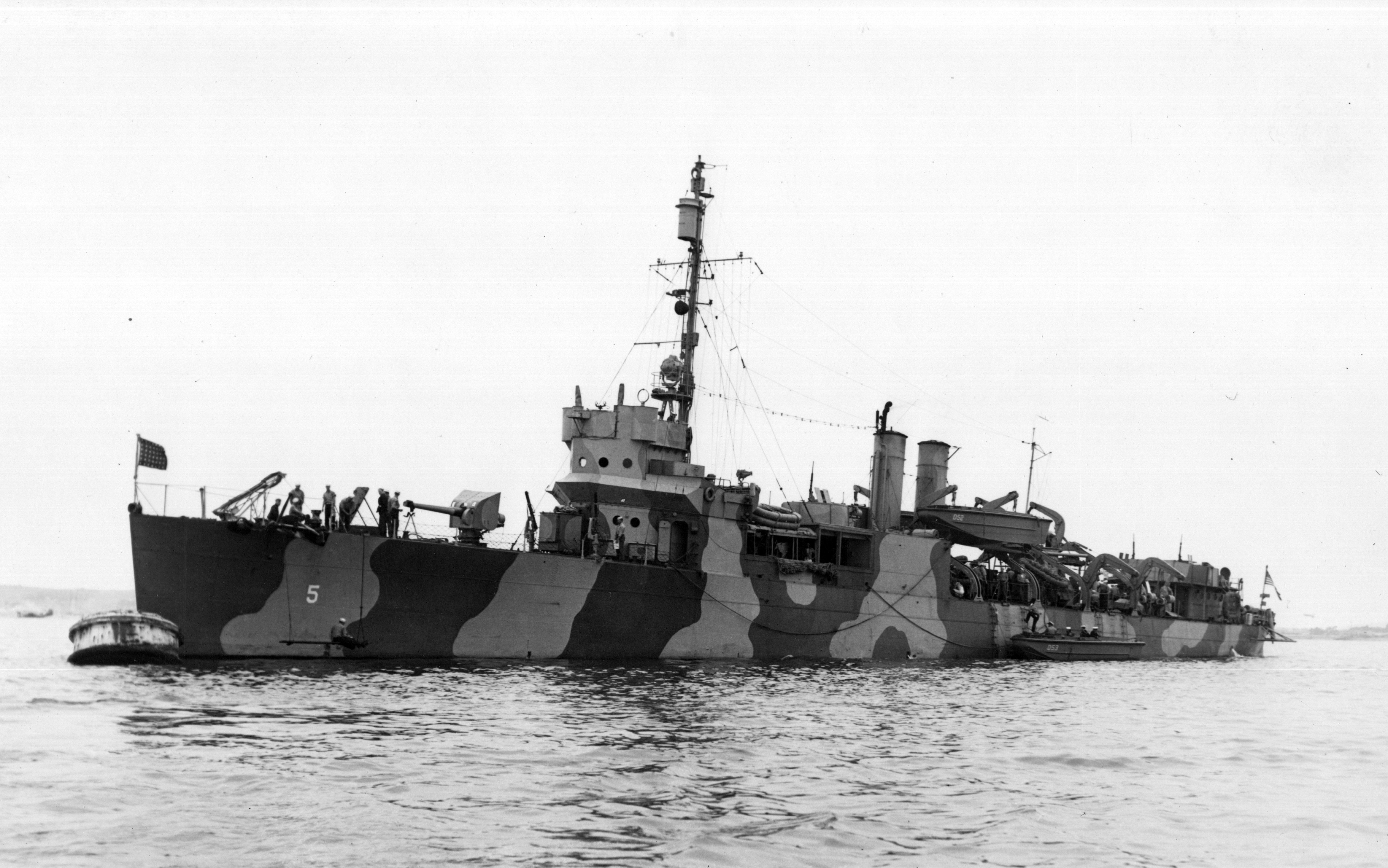
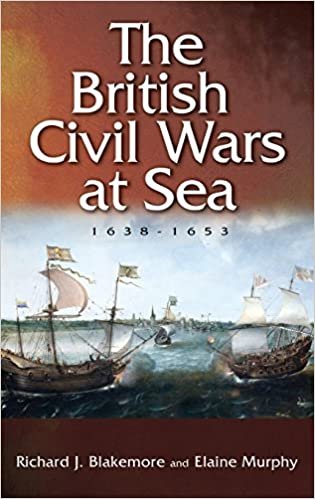

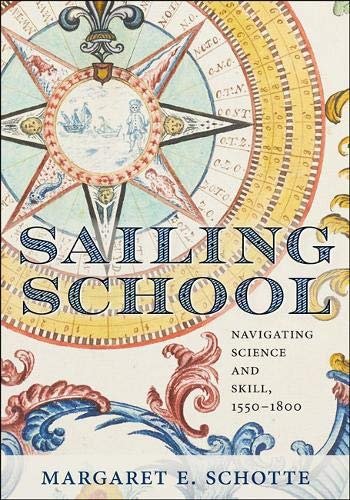

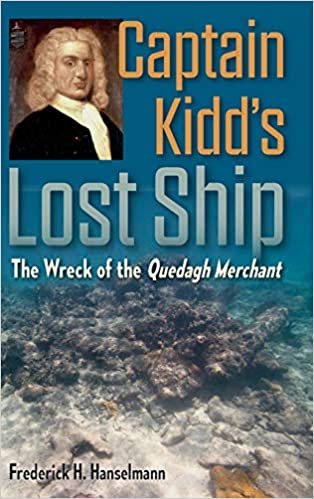
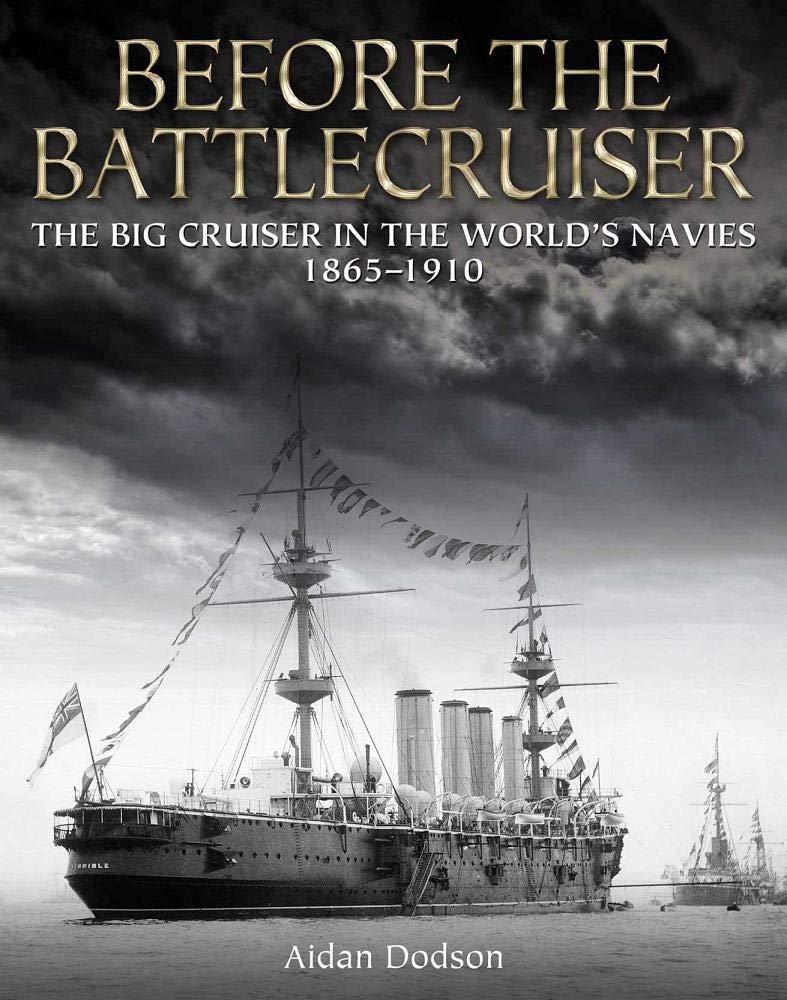

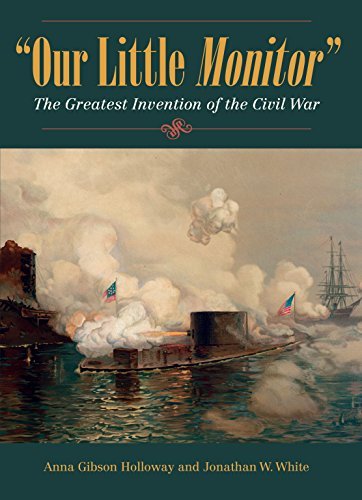

.jpg.6d7c7830d0db53ed2f2945b3fcec143c.jpg)
.jpg.19b2948ba17ede809d27d4dbcb260f2d.jpg)
.jpg.43ee05f793be115c300ddbe9c13abc81.jpg)
